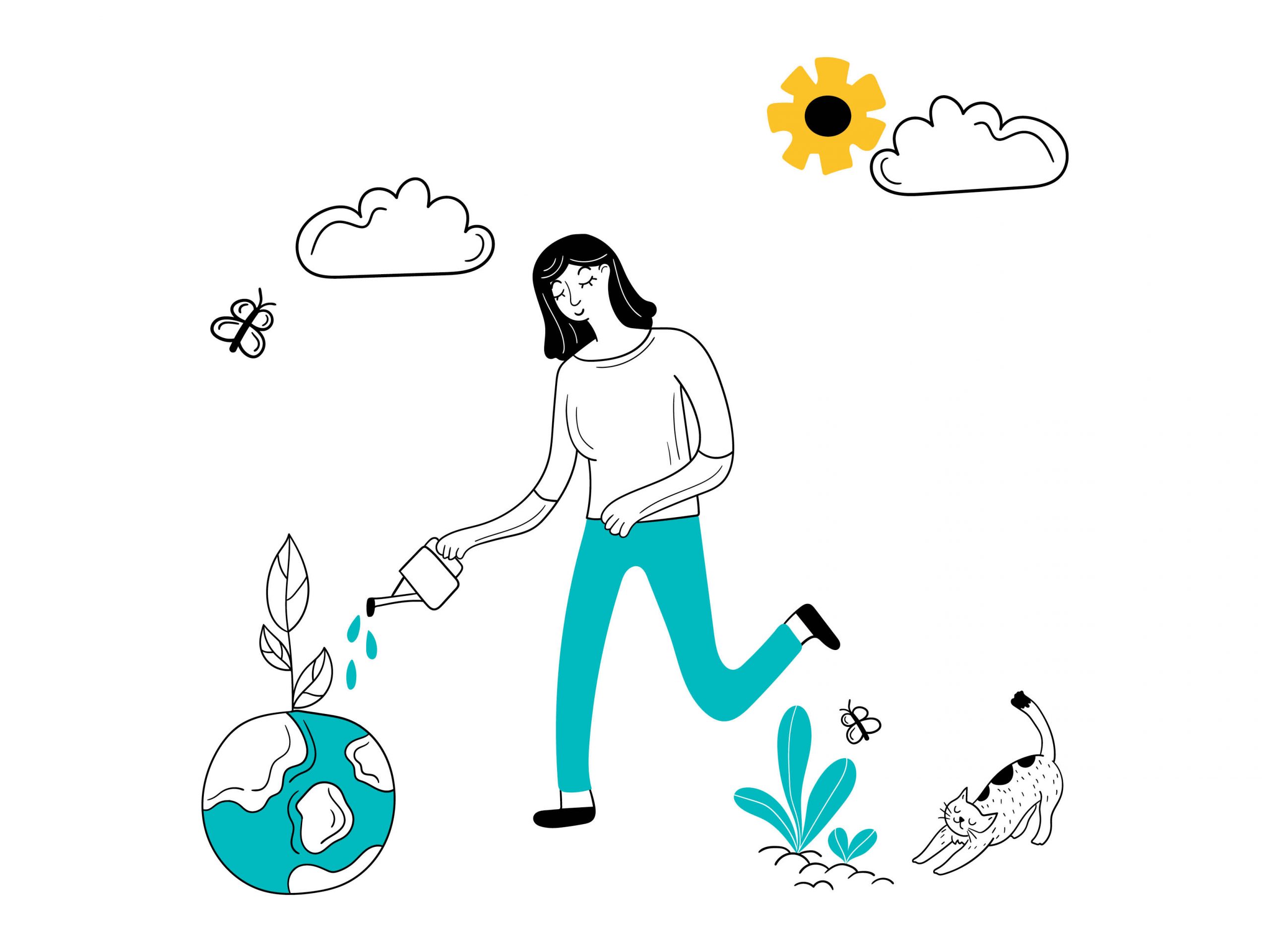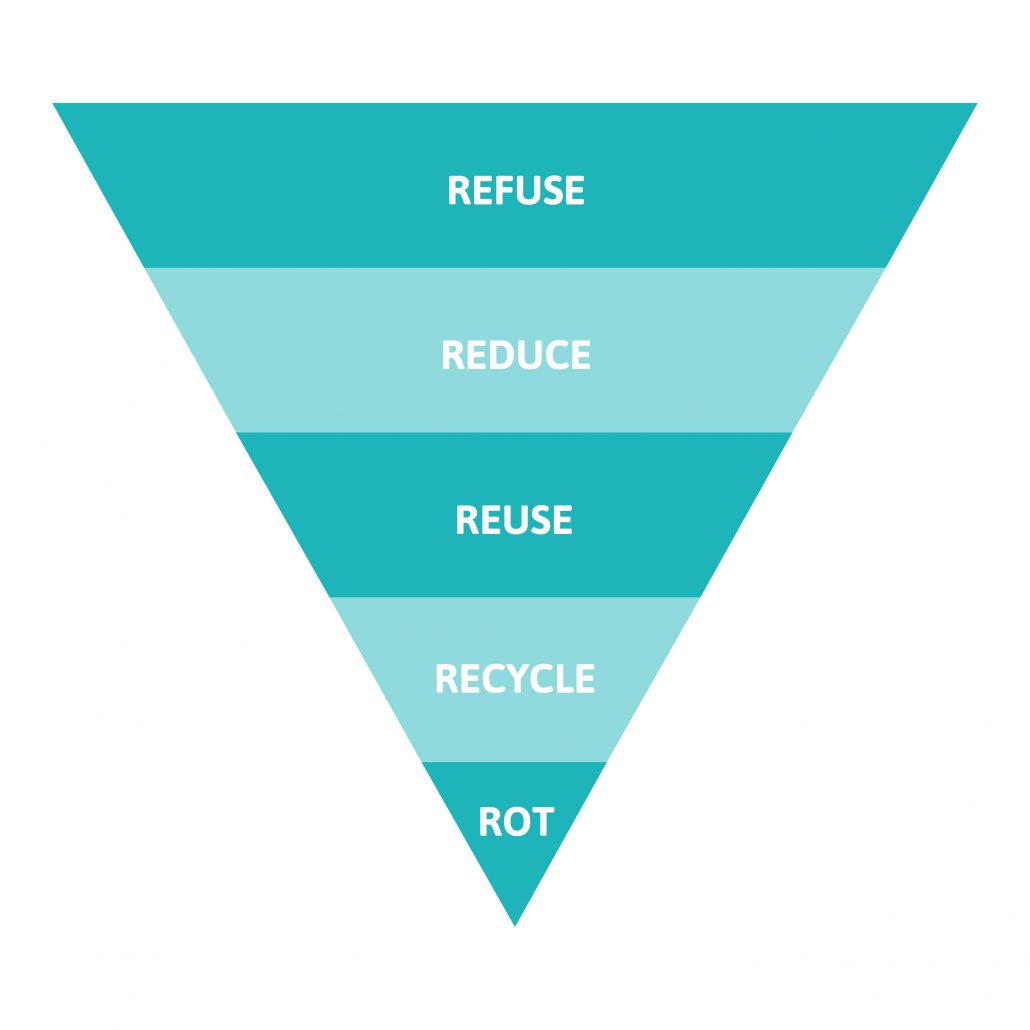How to live zero waste while working from home
Here at AJT, we have all been working fully remotely for a few months now, and we try to encourage each other to reduce the environmental impact of our home offices. The ‘zero waste’ approach is growing in popularity, and with more of us working from home in the long term, we want to align ourselves more with our personal sustainability goals. But what does going zero waste mean? Is it really as difficult as it sounds? And why does it matter? In this article, we’ll go over the five pillars of zero waste and some practical tips to reduce your environmental impact at home.
What is zero waste?
Zero waste is a holistic lifestyle with the main aim of saving resources. Managing and storing waste, like incineration and landfills, are incredibly energy intensive. So, the less waste we leave behind, the fewer CO2 emissions we cause. Some of you are now probably thinking of recycling, but recycling is already a type of waste management and can’t be our only strategy as the idea is to avoid using resources in the first place. Zero waste is also about more than reducing the amount of household waste: it applies equally to other areas like mobility, electricity, agriculture, and finance.
The 5 Rs of zero waste
The zero waste pyramid, also called the 5 Rs, illustrates the strategies involved in going zero waste. Take these steps one at a time, from top to bottom.
REFUSE: Can I do without this product?
Notice where you can refuse to bring a physical product into your life, that you will later have to dispose of. For example, when a shop attendant starts bagging your purchases, you can say, “I don’t need a bag, actually, I’ve brought my own.”
More and more frequently we are given the option to have something sent to us as a letter or as an email, so to save paper, you can choose email.
REDUCE: Do I really need all of these things?
Forgo shopping for the newest stationery if you still have unused notepads sitting in your drawer. Every single purchase has an impact.
This is your chance to become a minimalist. Fewer products, after all, means less time tidying and taking care of them.
REUSE: Can I use this again?
Many people already take their reusable tote bags to the supermarket. But have you ever tried writing your to-do lists on the blank side of a used envelope?
Make sure things last as long as possible before they absolutely have to go into the recycling bin.
RECYCLE: Can I use this again in a different way?
Recycling is a bit further down the list because it’s more energy intensive than the previous steps.
Check what goes into your local recycling bins, e.g. glass or paper. Yes, sometimes you have to walk a few blocks to get there, but landlords may be open to recycling providing bins in your building for convenience.
ROT: Can this be composted?
Maybe your neighbourhood has its own compost site, or, if you’re keen for a little project, you could try composting in your own garden or even indoors with a little worm farm.
But what’s so bad about plastic, anyway?
It’s true: all of these steps require thinking about and planning ahead, collaboration, and sometimes relinquishing certain beloved products altogether. So why should you still try? In our linear economy, resources are not intended to be used long term. Instead, many products are non-repairable by design. And there comes a point, often sooner than later, when a plastic product cannot be reused in any way and has to be thrown away. The contamination caused by plastic waste can be seen all around us. Plastic can also enter the food chain and our own bodies. Therefore, we have to rethink the way we design, produce and handle products so they are more durable and less likely to pollute the planet.
How can I avoid plastic in my home?
Working remotely means spending the majority of our time at home. This is therefore the place we can make the most impact in terms of sustainability – not just in our ‘office’ but in all areas of life. Here are a few examples:
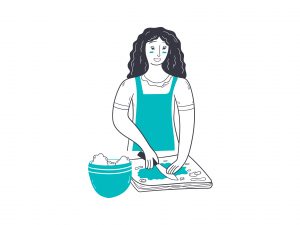 In the kitchen
In the kitchen
The best way to reduce packaging waste, as well as food waste, is to buy packaging-free e.g. in zero waste shops and at farmers markets, but generally at any place that offers unpackaged groceries. You put the products in your own containers and you only buy the amounts you actually need.
Correct storage is paramount for preventing food waste. Some products spoil quickly if not stored at the appropriate temperature – and there are temperature variations even inside the fridge.
Many people are not aware that food may still be edible after its ‘best before’ date, according to the producer. Trust your senses – they’ll tell you if the product looks, smells and tastes normal before you decide to bin it.
In the bathroom
Many throwaway products like makeup remover pads are now available in a washable, reusable form, and solid soap and shampoo bars will bring your packaging waste down to a minimum.
Toothbrushes made out of bamboo are a good alternative to ones made of plastic, not least because they usually come packaged in cardboard.
But always remember, health comes first: if you have any concerns about a hygiene product, talk to your doctor or pharmacist.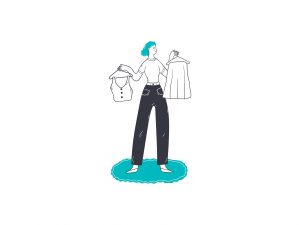
In the wardrobe
Big players in the fashion industry are constantly competing for low prices, speed and market share. The environment, as well as the workers in the production lines, are left carrying the costs.
Consumers are influenced into buying new clothes at short intervals to stay up to date with the latest fashion. But there are rewarding alternatives to shopping for new clothes.
Borrowing is a great option for special occasions, e.g. weddings or balls, if you are only going to wear an outfit once. You could also try swapping clothes with a friend: everyone gets something new, it’s free and nothing is wasted. Lastly, you can buy second hand. If you know what you’re looking for, you might find something for a lower price than you would in a regular shop – without using additional resources. Taking good care of the clothes you have makes them last longer. Follow the instructions on the labels and practise mending holes with a thread and needle.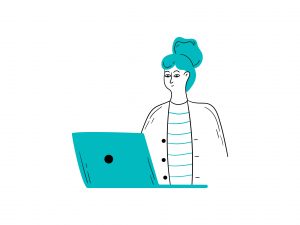
At your desk
Since zero waste is about more than just the waste in your bins, consider wifi, phone service or utility providers that use green power. Green electricity harnesses the energy of the sun, wind or water, and green gas is made by composting organic waste. These sustainable ways of generating energy are less invasive and produce fewer emissions than conventional energy sources. If you live in the UK, maybe you’ve heard of Ecotricity (https://www.ecotricity.co.uk/), a sustainable energy company, or Green Net (https://www.greennet.org.uk/), an internet service provider using renewable energy.
By going as paperless as possible, you can eliminate clutter and save resources. Think twice before you print an invoice and opt for storing your files electronically.
Notebooks and other stationery made from recycled paper are widely available these days, and you might consider looking into companies that provide refurnished equipment rather than buying a phone or laptop that is brand new.
Helpful apps
Sometimes you do need an entirely new product. But sometimes, the difference between a green brand and one that’s just ‘green washed’ is hard to tell.
Good on You
For more eco-friendly purchasing decisions, the app Good on You checks fashion brands for sustainability standards. If you don’t find what you’re looking for when you go second-hand shopping, this app can help you find the most sustainable option.
CodeCheck
To avoid consuming products with a harmful impact on nature and your health, you can use the CodeCheck app to scan the barcodes of cosmetics. The result shows you exactly how many and, above all, which of the ingredients are questionable.
Beat the Microbead
With the app Beat the Microbead you can also scan the barcode of hygiene products to find out if the product contains microplastics, like many conventional products do – this app helps you avoid them and identify alternatives.
Some final words …
Finally, it’s good to remember that the best product is the one you already have. You don’t need to switch out your old plastic pencil holder for an artisanal one made out of sustainably sourced wood. The fewer new products you bring into your life, the better! The intention behind this article was not to give you a shopping list, but to show that aiming for a waste-free life is easier than you might have thought, and that doing your bit to protecting the climate while working from home is not a utopian idea. If you want to get involved in your community, look to see if there are any zero waste organisations in your area. The European parent organisation, Zero Waste Europe (link: https://zerowasteeurope.eu/) could be a starting point.
